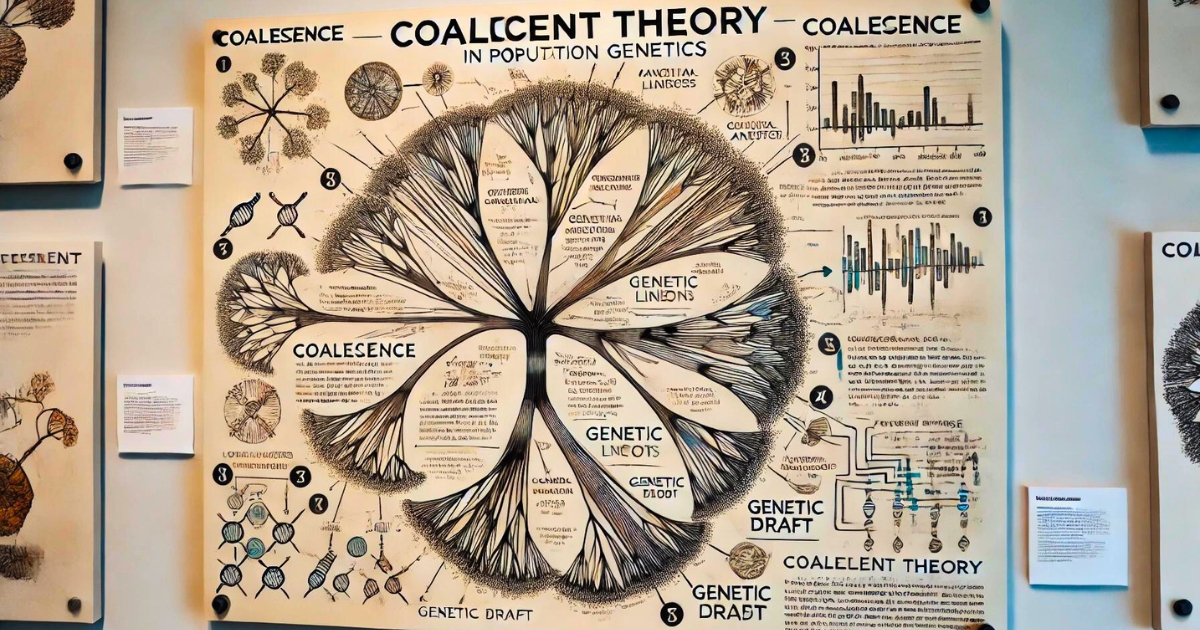Overview of Coalescent Theory
Coalescent theory is a fundamental concept in population genetics. In simple terms, it’s a framework for understanding how a population has evolved by tracing the ancestral origins of specific genes back through time.
Historical Background and Development
The foundation of coalescent theory was laid in the early 1980s by the scientist John Kingman. His work, along with contributions from other researchers, transformed traditional population genetics into a more modern discipline. This allowed scientists not only to predict genetic changes but also to understand the genetic diversity of today’s populations based on past events.
Fundamental Concepts
The core idea of coalescent theory is to track specific genes in a present-day population back through time, identifying the point at which they share a common ancestor (the most recent common ancestor, or MRCA). The simplest models assume no genetic changes or population movements and calculate the time it takes for two genes to coalesce into a common ancestor.
Mathematical Foundations
Coalescent theory relies on mathematical models and probability theory. Key elements include the number of generations since two genes shared a common ancestor (coalescence time) and a parameter called theta (θ), which represents the population size and rate of change. These models use tree-like diagrams called “gene genealogies” to illustrate the relationships between genes and estimate the time to the MRCA.
Applications and Extensions
Coalescent theory is widely used to understand changes in population size, the frequency of migrations, and past population structures. It’s also valuable in studying genetic diseases and tracing the transmission of genes associated with specific illnesses. The theory has evolved to accommodate more complex scenarios, such as changes in population size over time and the possibility of multiple lineages coalescing simultaneously.
Case Studies and Practical Use
John Wakeley’s book, “Coalescent Theory: An Introduction,” is a well-known primer on the subject, but extensive specialized literature also exists. For example, coalescent analysis has been used to compare the genetic information of modern humans and Neanderthals, shedding light on human evolution and the possibility of interbreeding between the two groups. Additionally, the theory has helped scientists understand the genetic basis of certain diseases by analyzing the history of genes associated with those diseases.
Challenges and Future Directions
While coalescent theory is a powerful tool, it has limitations. One major challenge is the difficulty of accurately estimating gene genealogies from genetic data. This can introduce errors in the estimation of coalescence times and other parameters. However, advancements in computational methods have helped address these challenges, and the theory’s reliability has improved by incorporating more complex evolutionary patterns.
Glossary of Terms
- Population Genetics: The study of genetic diversity and change within populations.
- Allele: A different version of a gene at the same location.
- Effective Population Size: The number of individuals actually contributing to reproduction.
- Gene Flow: The movement of genes between populations.
- Population Structure: The distribution and relationships of individuals within a population.
Conclusion
Coalescent theory is a cornerstone of modern population genetics, providing a powerful framework for understanding the relationships between genes within a population. By combining mathematical rigor with biological phenomena, it has become an essential tool for studying evolutionary history, genetic diversity, and the genetic basis of diseases. As computational techniques continue to advance, the applications of this theory will expand, offering even deeper insights into the evolutionary processes that shape a population’s genetic makeup.


